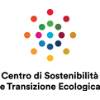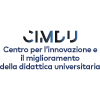Raffaele Casa
 Prof. Dr. Raffaele Casa,
Prof. Dr. Raffaele Casa,
Associate Professor at the Department of Agriculture Forestry Nature and Energy (DAFNE), University of Tuscia, Viterbo, ITALY
Education
§ University Degree in Agricultural Sciences at Viterbo University, 110 out of 110 cum laude. April 1990.
§ Doctorate degree (PhD) at the University of Dundee (Scotland, UK) awarded in 2003. Thesis title: “Multiangular remote sensing of crop canopy structure for plant stress monitoring” for research on applications of Remote Sensing to Plant Ecophysiology and Agronomy.
Professional and research experience
§ March 2005 to present: Associate Professor at the Department of Crop Production of the University of Tuscia, Viterbo (Italy).
§ 1995 to March 2005: researcher at the University of Tuscia, Viterbo.
§ August 2008 to August 2009: EU Intra European Fellow at the Institut National de la Recherche Agronomique (INRA) of Avignon (France). Responsible, at the Unit EMMAH (Environnement Méditerranéen & Modélisation des Agro-Hydro systèmes) of research project “FUNctional-structural plant models for improved estimation of crop and soil status based on REmote Sensing Observations (Acronym FUNRESO)”, under the supervision of Dr. Fred Baret.
§ August 2001 to January 2002: research worker under contract at the University of Dundee (Scotland, UK) for the EU project “Evaluation of alternative techniques for determination of water budget components in water-limited, heterogeneous land-use systems” (acron. WATERUSE).
§ July 2000: recipient of an Italian National Research Council (CNR) Short-term Mobility scholarship spent at the University of Dundee.
§ February 1999 to February 2000: recipient of an EU Marie Curie fellowship spent at the School of Life Sciences, Division of Environmental and Applied Biology of the University of Dundee (Scotland). Work on a research project entitled "Water and nitrogen stress monitoring of herbaceous crops using hyperspectral multidirectional remote sensing". Supervisor: Prof. H.G. Jones.
Research interests
Current research interests include the study of remote sensing application for precision farming; hyperspectral and multiangular approaches for the detection of plant canopy stress in arable crops; the effects of environmental factors on arable crops, with particular interest for evapotranspiration, water and radiation use efficiency, crop canopy structure and crop growth modeling; agrometeorology and use of micrometeorological techniques.
Publications
Peer reviewed papers on ISI journals
1. Casa R., Varella H., Buis S., Guérif M., De Solan B., Baret F., 2012. Forcing a wheat crop model with LAI data to access agronomic variables: evaluation of the impact of model and LAI uncertainties and comparison with an empirical approach. European Journal of Agronomy, 37, 1-10.
2. Casa R., Baret F., Buis S., Lopez-Lozano R., Pascucci S., Palombo A., Jones H.G., 2010. Estimation of maize canopy properties from remote sensing by inversion of 1-D and 4-D models. Precision Agriculture, 11, 319-334.
3. Casa, R., Rossi, M., Sappa, G., Trotta, A., 2009. Assessing crop water demand by remote sensing and GIS for the Pontina Plain, Central Italy. Water Resources Management, 23:1685–1712.
4. Casa R., B. Lo Cascio, 2008. Soil conservation tillage effects on yield and water use efficiency in on irrigated crops in Central Italy. Journal of Agronomy and Crop Science, 194, 310–319.
5. Casa, R., Castrignanò, A., 2008. Analysis of spatial relationships between soil and crop variables in a durum wheat field using a multivariate geostatistical approach. European Journal of Agronomy, 28(3), 331-342 (doi:10.1016/j.eja.2007.10.001).
1. Casa, R., Jones, H.G., 2005. LAI retrieval from multiangular image classification and inversion of a ray tracing model. Remote Sensing of Environment 98, 414-428.
2. Casa, R., Jones, H.G., 2004. Retrieval of crop canopy properties: a comparison between model inversion from hyperspectral data and image classification. International Journal of Remote Sensing, 25(6):1119-1130
3. D'Annibale, A., Casa, R., Pieruccetti, F., Ricci, M., Marabottini, R., 2003. Lentinula edodes removes phenols from olive-mill wastewater: impact on durum wheat (Triticum durum Desf.) germinability. Chemosphere, 54, 887-894.
4. Rossini, F., Casa, R., 2003. Influence of sowing and harvest time on fibre flax (Linum usitatissimum L.) yield. Journal of Agronomy and Crop Science, 189 (3), 191-196.
5. Jones, H.G., Archer, N., Rotenberg, E., Casa, R., 2003. Radiation measurement for plant ecophysiology. Journal of Experimental Botany, 54, 384, 1-11.
6. Casa, R., D'Annibale, A., Pieruccetti, F., Stazi, S.R., Giovannozzi Sermanni, G., Lo Cascio, B., 2003. Reduction of the phenolic components in olive-mill wastewater by an enzymatic treatment and its impact on durum wheat (Triticum durum Desf.) germinability. Chemosphere 50, 8, 959-966.
7. Casa, R., Russell, G., Lo Cascio, B., 2000. Estimation of evapotranspiration from a field of linseed in Central Italy. Agricultural and Forest Meteorology, 104, 289–301.
8. Jones, H.G., Anderson, J.M., Casa, R., 2000. Multispectral and multiangular remote sensing of crop canopy stress. Aspects of Applied Biology, 60, Remote Sensing in Agriculture, 155-162.
9. Casa, R., Russell, G., Lo Cascio, B., Rossini, F., 1999. Environmental effects on linseed (Linum usitatissimum L.) yield and growth of flax at different stand densities. European Journal of Agronomy, 11, 267–278.
















